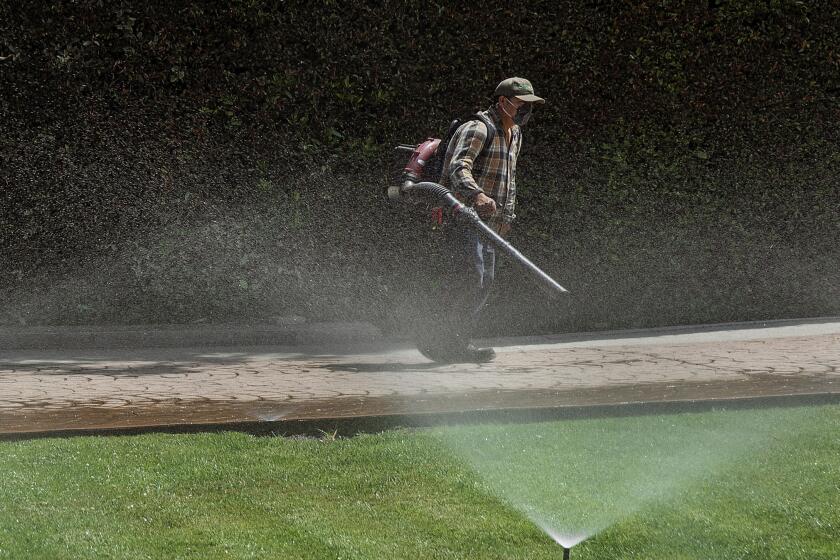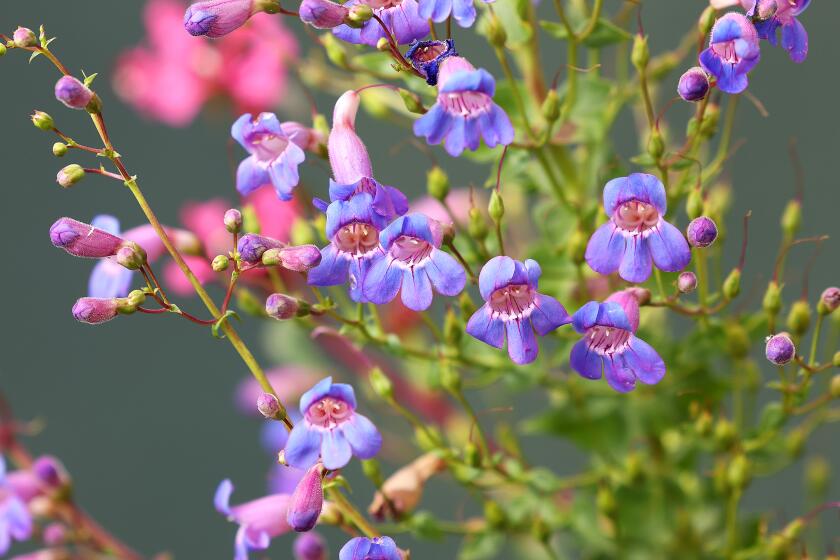FOR GARDENERS, A BIT OF ENGLISH COUNTRYSIDE ROMANCE
- Share via
Every inch settled into its rocky English landscape, this Cotswold cottage and brook-side garden seem to be delight- ful summer subjects, even if they do defy translation to our surround. In Southern California, any such rivulet would, of course, be contained inside a deep drainage channel to protect against that occasional flood; an earthquake would quickly topple the carefully stacked stones that make up the house and the tipsy garden walls. Even the plants in the garden won’t grow in Southern California, but our hot summer days were made for dreaming, so here’s a bit of English-countryside romance.
The cottage, which dates from the 1600s, was an ale house on the road from Wales to Bristol. Drovers stopped here for a pint, and cattle grazed lazily on the grassy downs. When Greta Wright bought the cottage for an eventual retirement home, it was dilapidated; the property was strewn with rock and tumbled outbuildings. Seven truckloads of debris were carted off and topsoil was brought in, sack by sack, on weekend after weekend, until the site was ready for gardening at the time of her retirement, five years ago.
The delightful paths that angle through the garden were made from some of the stones that stayed, some salvaged from the fallen buildings. Here and there, for no apparent reason, the stones run out and gravel takes over. Perhaps the paths are intended to be finished some day, though we hope not.
The garden walls consumed more stone, surrounding the garden and excluding the meadow, but are open in two spots to allow the brook to pass through.
This rill is the headwater of the River Coln, which runs clear to the Thames. In a manner perhaps mysterious to a Southern Californian, it never seems to flood or dry up; it simply flows along as though controlled by a tap upstream. Steps lead into the stream as if it were another garden path, and from it, Wright, wearing knee-high rubber boots, weeds and tends to otherwise inaccessible parts of the garden.
To Wright, a rock garden seemed to be the right choice, considering the quantity of Cotswold yellow stone that littered the site. Beds of gritty soil are raised above ground, so drainage is swift--a requirement of most rock-garden or Alpine plants. One wall is a garden in itself. Rubble and amended soil are sandwiched between the sides for growing finicky Alpine plants that might miss their lofty mountain perches if they were planted any lower to the ground. What are the wonderful little plants that thrive in such thin soil? That would be too much of a tease. The few that could be grown in Southern California--with much effort--cannot be found. Better to just dream on.






